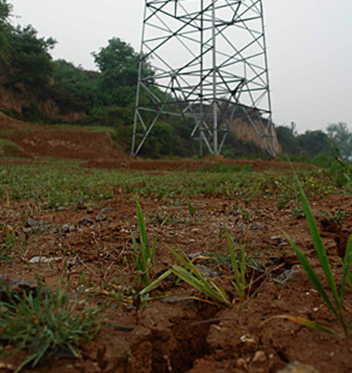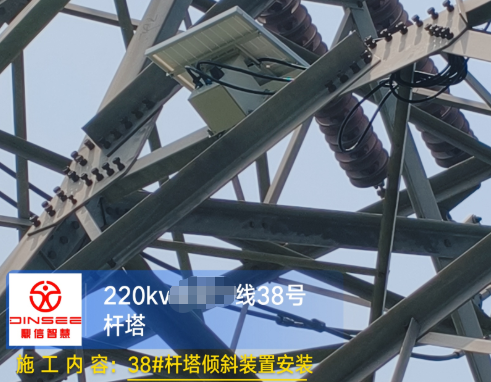Even power grid towers/steel towers firmly rooted in the ground can eventually "bend"? Yes, despite their sturdy appearance, tower tilting is not a rare occurrence. Tower tilting is actually one of the common hazards in power grid maintenance. Some cases involve only a few centimeters of minor displacement, while others may tilt more than 30 degrees, even posing a risk of collapse. As for the causes of tower tilting, it all boils down to a disruption of balance—the originally stable load-bearing state is disrupted by external factors, causing the tower to deviate from the vertical direction.
1. Specifically, this is mainly caused by the following factors:
1. Geological changes
The stability of transmission towers depends entirely on the concrete foundations and pile foundations. Natural disasters such as heavy rains and earthquakes can cause landslides or collapses, leading to loosening of the soil layers on slopes. This can result in the tower foundations being dragged downward, causing the tower structure to tilt. Additionally, tower tilting hazards often occur in mining areas and abandoned mine areas. The reason is straightforward: for example, the ground in abandoned mine areas may slowly sink. If the foundation of the tower settles unevenly, with one side sinking deeper than the other, the tower will tilt significantly.
2. External force damage
Although towers are sturdy, they cannot withstand direct external force impacts. When excavators and cranes operate near towers on construction sites, improper operation may result in direct collisions with the towers or their foundations. Pylons in suburban areas may also tilt due to foundation settlement caused by surrounding construction activities (such as subway excavation).
3. Natural challenges—the long-term effects of wind, rain, and ice
Don't underestimate the power of nature. Strong winds such as typhoons and tornadoes exert lateral forces on towers. If tower bolts are loose or guy wires are broken, the tower may be blown over by a typhoon. In winter, ice buildup on conductors increases the vertical load on towers. If the ice buildup is uneven, one side of the conductor may bear too much weight, causing the tower to tilt.
4. Instability caused by aging of parts
Like all equipment, the connecting bolts of steel towers and the embedded parts of cement poles are subject to long-term vibration and temperature changes, which can cause them to loosen. Once the bolts in key areas come loose, the overall structural stability of the pole tower is compromised, causing it to tilt.
II. Monitoring Methods
Shenzhen Dingxin Smart Technology Co., Ltd. is pleased to introduce our Tower Tilt Online Monitoring Device (with Beidou), a comprehensive system designed for high-precision detection of angular changes. the device can sense and collect longitudinal and lateral vibration and tilt data from the tower, store the data accordingly, and transmit the measurement results via a compatible communication network to the condition monitoring master station (compliant with the General Technical Specifications for Transmission Line Monitoring Devices, supporting VPN transmission). Its data collection functionality includes automatic data collection, which automatically collects longitudinal and lateral monitoring data from the tower at pre-set time intervals. Once the tilt angle exceeds the safety threshold, an alert is immediately sent to the backend. Upon receiving the signal, maintenance personnel can proceed to the corresponding tower site to conduct hazard inspections and restore the tower to its upright position through measures such as reinforcing the foundation, adjusting guy wires, or replacing components. Additionally, based on customer requirements, we offer optional support for Beidou functionality.
Therefore, although there are potential hazards of tower tilting, most of them can remain stable and continue to ensure uninterrupted power supply under scientific monitoring and timely response.






